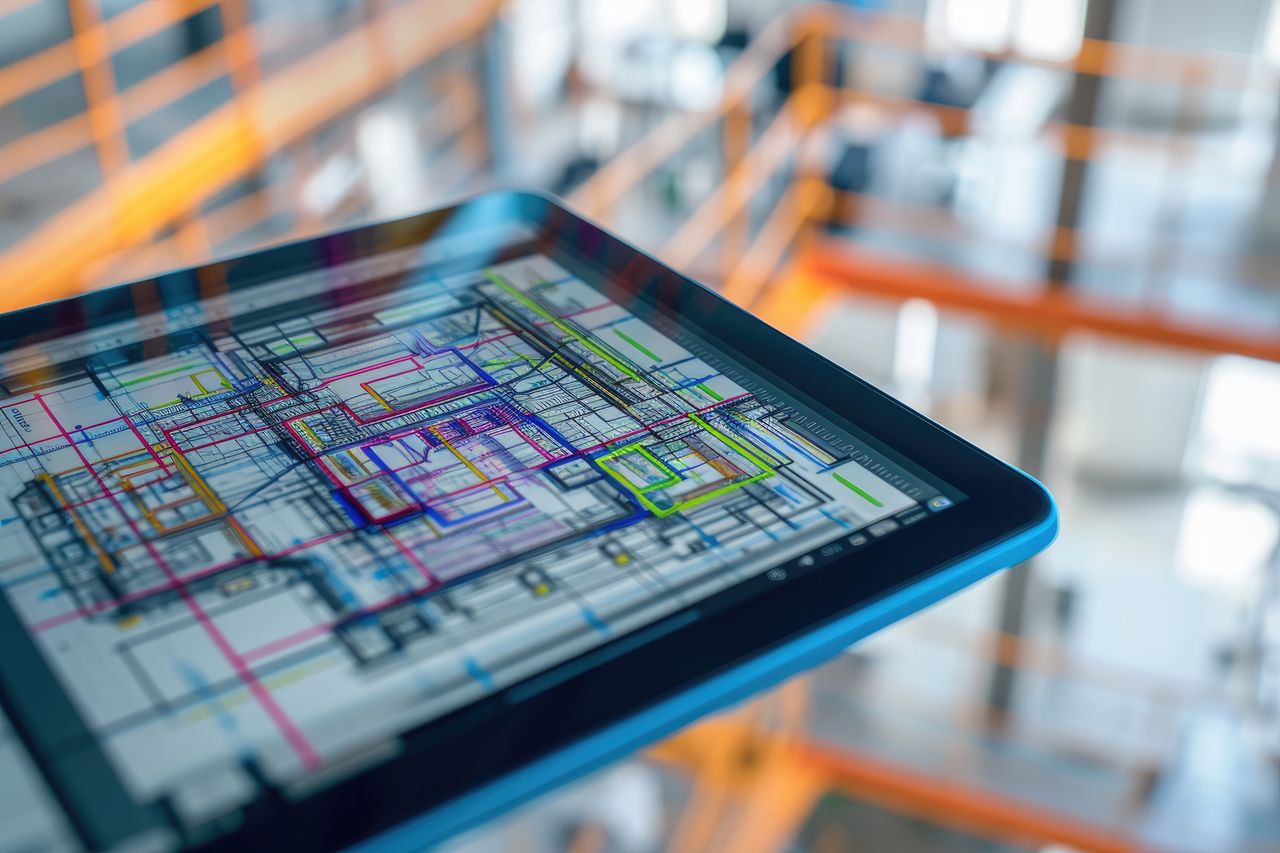News & Insights
Rethinking Construction

 Jason Ward is on a mission to create a fair and rewarding environment within the construction sector. Through his work at RCP, Jason has been conducting his own ethnographic research to understand the pain points for workers in the industry. He has considered views from driving the project vision, through to the people on the tools. Jason hopes that by understanding the challenges in each part of the construction chain, we can create a cohesive view of the industry, ultimately aligning the way we work to benefit everyone involved.
Jason Ward is on a mission to create a fair and rewarding environment within the construction sector. Through his work at RCP, Jason has been conducting his own ethnographic research to understand the pain points for workers in the industry. He has considered views from driving the project vision, through to the people on the tools. Jason hopes that by understanding the challenges in each part of the construction chain, we can create a cohesive view of the industry, ultimately aligning the way we work to benefit everyone involved.
To this end, Jason has conducted over 135 interviews with contractors, consultants, clients, and now shares his thoughts for a better way of working.
Over the past year, conducting these interviews has been both illuminating and a privilege. They have brought to light the consistent issues facing the construction industry, as well as the personal and professional impacts on workers.
Identifying the issues has been straightforward, but finding solutions is a much bigger task. However, we must start somewhere, and the area of design holds the key to solving many of our challenges.
Much of the evidence I have collected points to the challenges of design completeness, coordination, and buildability. These three factors are leading to time and budget blowouts with risk being passed down the chain which is creating a high-pressure environment that is preventing the industry from reaching its productivity potential.
Importance of Quality Design for Project Success
Jeremy Hay, Managing Director of RCP, stresses that "90 percent of a project's success happens before ground is broken," highlighting the crucial role of the pre-construction phase. My research supports this, emphasizing the need within our industry to raise client awareness regarding the significance of design quality, as it directly influences project outcomes. This underscores the importance of dedicating sufficient investment and time during the design stage to prevent more expensive corrections later, which unfortunately remains common place.
RCP is not alone in highlighting this issue. In my research, a General Manager from a leading main contractor in New Zealand, revealed their biggest risk lies is “design’. To offset this risk, they have integrated inhouse design functions, allowing them to have more control over the design quality being passed down the chain to construction.
Through my research, I have identified four design-related areas that consistently emerge as significant issues for industry workers.
1) Comm’s Overload
Twenty years ago, a medium to large project may have involved 8-15 key parties, including architects, project managers and construction managers. Now, with more complex regulatory and compliance requirements, technological advancements such as BIM, a multitude of designers and engineers, notwithstanding a growing number of stakeholders, that number of key parties has increased two to threefold. As an industry, we need to adapt to this increasing complexity, starting with improved communication.
Project management solutions such as Aconex and Procore are collaborative tools to help us manage increasingly complex projects. While they offer benefits for communicating, sharing documents and workflow management, one of the practical issues is the sheer number of emails and notifications. Sometimes it is just impractical to keep up with the volume of various communication messages which can number in the hundreds per day for each project.
The challenge becomes more critical as these comms are legally binding documents, therefore requiring each email to be read, understood, and responded to appropriately. Several consultants have reported communication in these platforms is used to ‘cover one back.’ This tsunami of correspondence adds little value to the project, absorbs valuable time, and creates a distrustful environment.
It seems that the more we use these platforms to reduce risk, the less they help us communicate effectively. In addition, as people lose trust in each other’s motives, our relationships, and traditional methods of conversation falter. The challenge lies in our growing dependence on technology-based platforms, which diminishes the value we place on traditional ways of communicating. We need to find a balance that values both, recognising the role each play.
2) Lack of On-Site Experience
My market research applauds the idea that our industry would benefit greatly from design students spending 6 months on site as part of their respective qualification. Unfortunately, it is becoming rare to find designers who have scraped their knees on a building site for any length of time. Without this firsthand experience, it is difficult to fully understand the broader implications of their designs. This is evident services coordination, where the designs often lack cross-discipline alignment. For example, cramming all the services and their required seismic restraints in the compact ceiling voids is sometimes not possible, leading to costly RFIs or extensive changes during construction. In an ideal scenario, these issues are resolved in the BIM model during the design phase, which may include robust discussions around potentially raising the floor-to-floor heights in some instances.
Given the above, RCP currently engages the expertise of credible “super subs” to assist some our design teams’ bridge the gap between design and buildability attempting to avoid expensive abortive works downstream.
We also see a mismatch between technical skills and on-site experience in relation to the BIM model issued to contractors. Despite best intentions, there remains quite a gap. Although each designer contributes their individual skills, the final BIM model (otherwise known as the federated model) is quite often not 100% coordinated and does not meet the contractors’ needs. Unfortunately, federated BIM models regularly fails to instil contractor confidence for either tendering or construction, hence the gap.
Identifying issues early from a buildability standpoint, requires a thorough review of the federated model, a high degree of cross-discipline design knowledge, and on-site experience. In today’s fast-paced industry these skills typically sit outside the expertise of designers and BIM managers, resulting in plans that are not entirely coordinated nor translate in practice.
RCP have begun to address this issue with the Design Assessment Service (DAS), seeing this service as a solution for critical project success.
3) A Focus on Speed
In response to mounting industry pressures, there is an emphasis on speed. Keeping projects on time and to budget is crucial, though challenging. It is important to be aware that something that worked well on a previous project may not provide the same results on the next, as the market is continually evolving. Typically, there is a sense of rushing the project in the early days to avoid falling behind. However, this can be counterproductive. Every change missed at concept, can morph significantly if having to be rectified during later design stages and even more so during construction. The cost to address issues as the project progresses, becomes exponentially expensive, and impacts a growing number of people.
Based on our interviews, contractors typically estimate project durations using industry norms. However, due to the competitive tendering process, these norms often reflect the shortest possible times rather than realistic averages. This practice sets potentially unrealistic expectations from the outset and adds pressure to move faster. Therefore, it is becoming apparent that a methodical, robust, upfront scrutinization of the design and construction programme is paramount. This review should incorporate sufficient time for design reviews, updating the BIM model and correcting respective documents. Without these changes, issues are simply passed from designer to contractor, resulting in programme blow-outs and unwanted costs for the client.
RCP strives to increase awareness regarding the crucial role of clients prioritizing time and diligence during the preconstruction phase. This involves establishing realistic budgets and carefully evaluating timelines to enable consultants to deliver high-quality designs from the outset. Allocating additional resources for thorough review and scrutiny of designs is essential for ensuring quality assurance, with a strong emphasis on ensuring designs are easily buildable.
4) Project Continuation to Ensure Good Outcomes
While systems such as project management solutions are important for sharing and documenting information, they are limited in capturing certain types of information. This becomes apparent when we see the impact of high staff turnover during a project. Departing employees take priceless knowledge and the history of the project with them, which can be difficult, if not impossible, to replace.
The ideal solution is retaining personnel to project completion where possible. While occasional turnover is unavoidable, it is more prevalent than ideal in our industry today. Establishing a supportive culture and work environment is essential for retaining staff, making it a worthwhile investment. On projects I have worked on abroad, financial bonuses were offered to staff as sophisticated clients were aware of the importance of project continuity.
Where to from here?
In summary, integrating on site experience within the design process dramatically improves the quality of the final design. Furthermore, investing time and attention throughout the design stage, whilst systematically scrutinising the programme from other credible sources (including experienced subject matter experts), can save substantial costs downstream. This can avoid multiple RFI’s, rework, and the associated time and cost implications.
Clever design also improves communication by identifying issues early. Much of today’s communication is related to RFI problem-solving on site. By supporting an improved design programme that anticipates and resolves issues during design, the number of people impacted in the long term is reduced. This lessens the corresponding cascade of communication, potentially improving relationships with consultants and contractors.
While good design will not solve every problem in our industry, delivering well considered and robust designs to contractors in the first instance is a great start, and in time would positively impact the project at every level.


